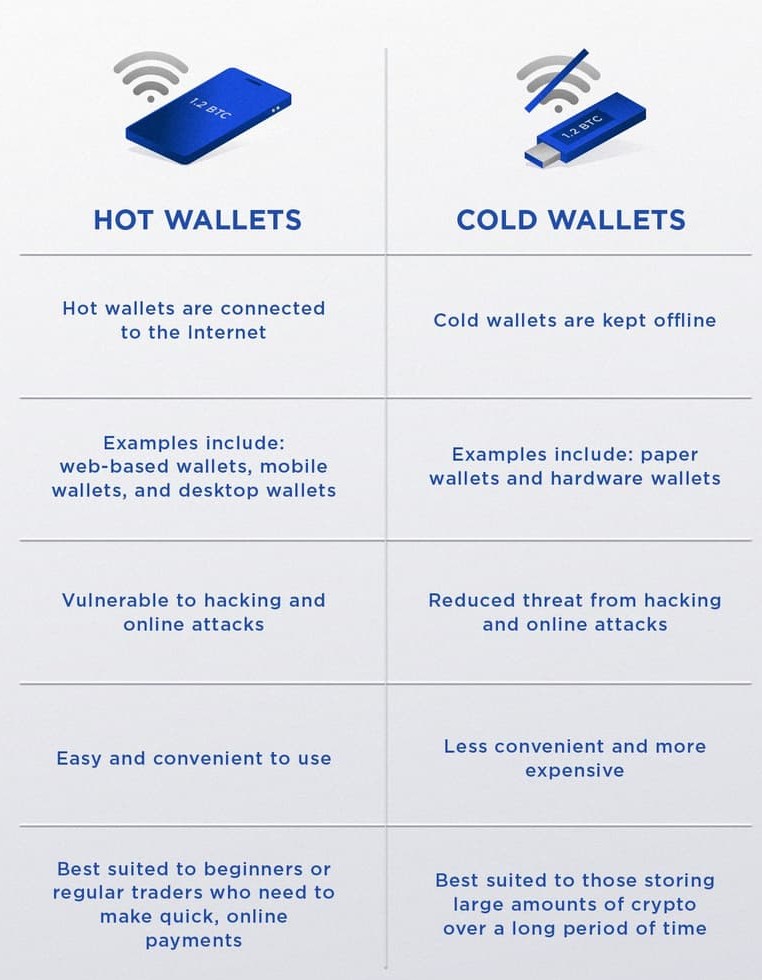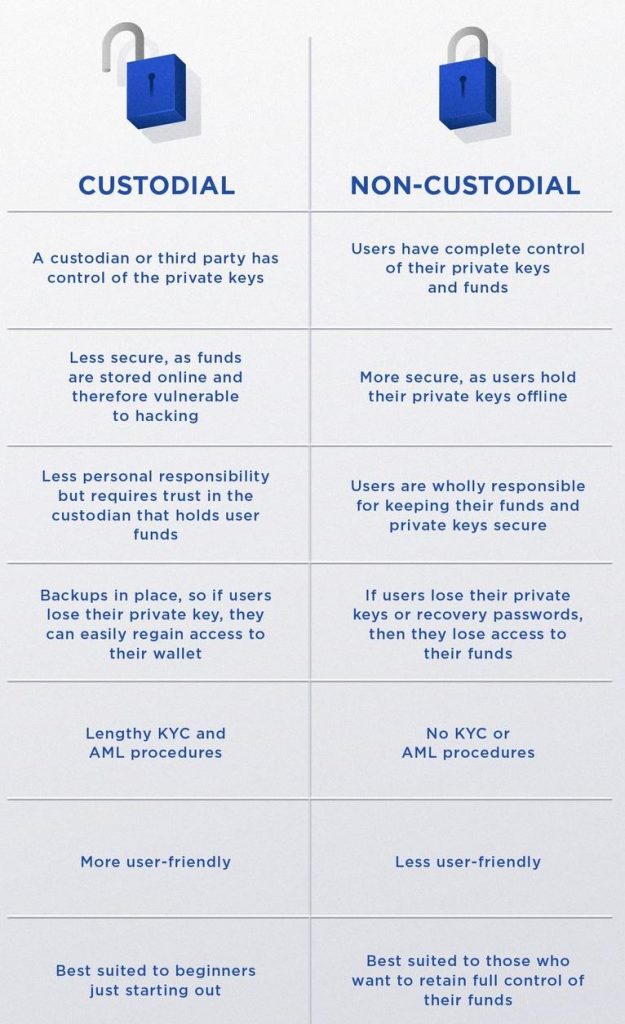What is a Crypto Wallet?
A cryptocurrency wallet is a tool that stores your public and private keys and provides a user-friendly interface to manage your crypto balances. It facilitates cryptocurrency transactions via the blockchain.
It’s essential to understand that cryptocurrency transactions don’t actually involve sending tokens from one mobile phone to another. Instead, when you send tokens, your private key signs the transaction, broadcasting it to the blockchain network. The network then updates the balances in both the sender’s and recipient’s addresses.
So, the term ‘wallet’ can be misleading because crypto wallets don’t store cryptocurrency like a physical wallet holds cash. Instead, they read the public ledger to show your balance and hold the private keys needed to make transactions.
Understanding Public and Private Keys
A key is a long string of random characters. A public key is like a bank account number and can be shared widely. On the other hand, a private key is like your bank account password or PIN and should be kept secret. In public key cryptography, every public key pairs with a corresponding private key. Together, they encrypt and decrypt data.

Types of Crypto Wallets
There are two main types of cryptocurrency wallets: software-based hot wallets and physical cold wallets.
Hot Wallets
Hot wallets are connected to the internet, making them more accessible but also more vulnerable to hacking. Examples include:
- Web-based wallets
- Mobile wallets
- Desktop wallets
- Software wallets
In hot wallets, private keys are stored and encrypted on the app itself, which is kept online. Using a hot wallet can be risky due to potential vulnerabilities in computer networks. Keeping large amounts of cryptocurrency in a hot wallet is not recommended, but risks can be mitigated by using strong encryption or devices that store private keys in a secure enclave.
Cold Wallets
Cold wallets are entirely offline, making them more secure but less convenient. They store private keys on a physical medium like a piece of paper or an engraved piece of metal. Examples include:
- Paper wallets
- Hardware wallets
Hot Wallets vs. Cold Wallets: Which to Choose?
The choice between hot and cold wallets depends on your needs:
- Hot Wallets: Ideal for day-to-day trading where accessibility is crucial.
- Cold Wallets: Better for storing large amounts of crypto assets, prioritizing security over convenience.

Custodial and Non-Custodial Crypto Wallets
Crypto wallets can also be divided into custodial and non-custodial types.
Custodial Wallets
Most web-based wallets, or hosted wallets, are custodial. These are typically offered by cryptocurrency exchanges and are known for their convenience. However, users do not have full control over their tokens, as private keys are held by the exchange. This requires trusting the service provider to secure your tokens and implement strong security measures.
Non-Custodial Wallets
Non-custodial wallets give users full control of their funds since the private key is stored locally. When setting up a non-custodial wallet, users are given a list of 12 randomly generated words, known as a ‘recovery phrase,’ to store safely. This phrase can generate the user’s public and private keys and acts as a backup in case the user loses access to their device.
Custodial vs. Non-Custodial Wallets: Which to Choose?
Choosing between custodial and non-custodial wallets depends on your preferences:
- Custodial Wallets: Suitable for beginners who might lose passwords or devices, as exchanges have better security practices and backup options. Transaction fees with custodial wallets tend to be cheaper or even free.
- Non-Custodial Wallets: Best for those who want full control over their funds.





3 Comments
Comments are closed.